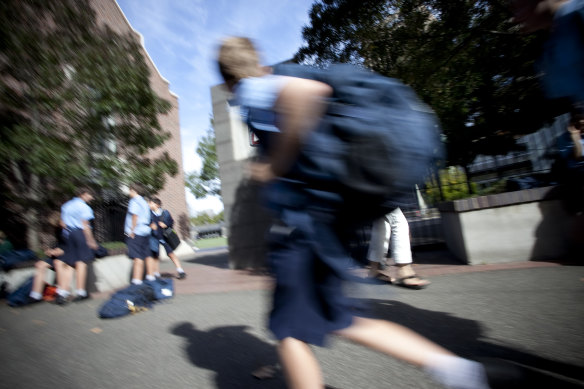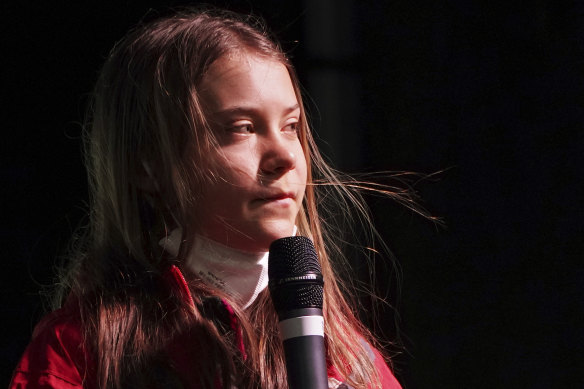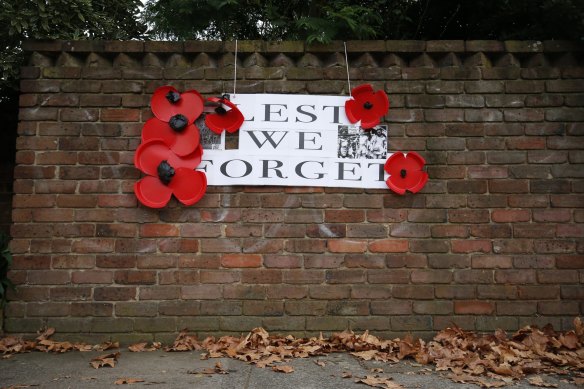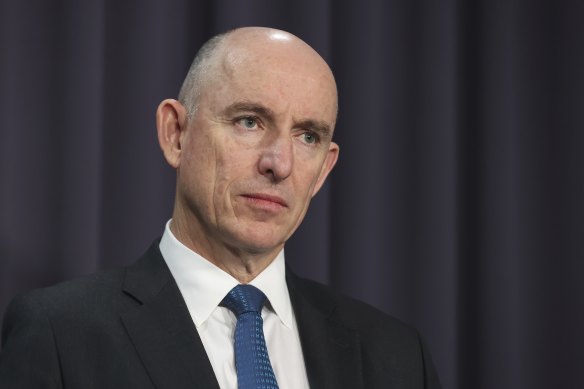By Jordan Baker and Adam Carey
The federal government believes lessons about “what it means to be Australian” have been restored to the national curriculum, but is worried students are now expected to learn too much in history and not enough in maths.
Its concerns were shared by only one state, Western Australia, when the country’s education ministers met on Friday, leading to a stalemate that will not be resolved until at least April, when they meet again. Victoria accused the Commonwealth of causing delays.

The federal government believes the history curriculum will teach students “what it means to be Australian”Credit: Arsineh Houspian
The Commonwealth was concerned that the original history draft curriculum did not include enough about Australia’s Western and Christian heritage and gave such a miserable view of the country’s past that young people would not want to defend it.
But as The Age and Sydney Morning Herald revealed, that draft has been reworked to increase the focus on Western heritage. It restores references to Christianity, cuts mentions of environmentalist Greta Thunberg and removes reference to the Anzac legend as “contested”.
After the meeting acting federal Education Minister Stuart Robert said many of his government’s earlier concerns were now resolved. “Western civilisation is something we should be proud of, and what it means to be Australian … is well and truly back into the curriculum.”
However, he worried the history curriculum was now too crowded. Reducing the amount of content, to give students more time to study the material in depth rather than racing from one subject to another, was one of the aims of the review.

Swedish climate activist Greta Thunberg will no longer be a subject of study.Credit: AP
“History remains very, very busy,” he said. There were 69 learning areas compared with around 50 in science, but science has more teaching time. “Whilst we acknowledge a 21 per cent reduction is good, we’d like to see it’s still decluttered more.”
Changes have also been made in maths; an original plan to delay times tables from year 3 to year 4, and linear equations from year 7 to year 8 has been reversed, but the Commonwealth and Western Australia are still worried it is too easy.
Mr Robert said Singapore required students in year 5 to add and subtract up to three digits without a calculator. “For Australia, it says you can choose between performing a mental calculation or using a calculator or a spreadsheet,” he said.
“These are the issues when it comes to mathematics. We’d like to see mastery of mathematics, for students to understand maths and how to recall [number facts].”

The reference to debates over the Anzac legend as being “contested” has been removed from the latest version of the new national curriculum.Credit: Getty Images
Victorian Education Minister James Merlino said the curriculum was ready to go and most states and territories were ready to agree to it.
“We pushed hard for key improvements to maths last year, and we’re pleased they’ve been added, but with no agreement from the Commonwealth today, we’ve insisted on a hard deadline for approval of the national curriculum by April this year,” he said.
“The Commonwealth needs to stop delaying this important piece of work so we can get this new curriculum into classrooms by 2023.”
NSW and Victoria have their own curriculums, but funding agreements with the Commonwealth require them to be aligned with the national curriculum. Other states, such as WA, only use the national curriculum.

Stuart Robert is acting Education Minister.Credit: Alex Ellinghausen
Sources, who spoke on the condition of anonymity, said debate over history has been less fiery since Education Minister Alan Tudge stood aside from his portfolio during an investigation into harassment allegations, which he denies.
Mr Tudge strongly opposed the original draft curriculum, saying he did not want students to be taught to hate Australia. “It’s cooled down since [Mr] Tudge went,” said one. “The feds seem less engaged.”
The federal government is still sitting on a review of university teaching courses, which was commissioned by Mr Tudge and finished last year.
When asked when Mr Tudge might return to the portfolio, Mr Robert said, “I’ll continue to serve as requested.”
James Ridley, who teaches history to students between years 9 and 12 at Hoppers Crossing Secondary College, said the curriculum serves as a guide for teachers to use, but that individual teachers and school environments have greater influence on how history is taught.
“In Victoria we have got our own curriculum which is somewhat guided by the national curriculum, but really it doesn’t have that much influence over our day-to-day teaching,” Mr Ridley said.
Mr Ridley said all history is contested.
“What’s been lost in this debate is that there is no one history: there are many histories,” he said.
“It’s important to be proud and all those warm and fuzzy feelings, but it’s also important to evaluate: what are the positives and negatives; who are the winners and losers?”
Professor Bronwyn Carlson, who heads Macquarie University’s department of Indigenous studies, said controversy about the history curriculum was part of a debate that started 50 years before federation, when the Australian Natives Association urged the teaching of white Australian history in schools.
“Removing any contested ideas is to teach a new generation of people who do not question the national narrative of peaceful settlement,” Professor Carlson said.
“You cannot speak of Christianity without also teaching of the violence perpetrated on Indigenous people under this regime and which is well documented in publications such as the Bringing Them Home report.”
Dr Leanne Holt, pro vice-chancellor of Indigenous strategy at Macquarie University, said some changes to the curriculum were ridiculous.
“The cross-curriculum priority of Aboriginal and Torres Strait Islander histories and cultures was introduced in 2008 and to date this curriculum has not been implemented appropriately,” she said.
“To now preface a curriculum objective to ‘learn more about our First Nations Australian histories and cultures’ with ‘the opportunity to deepen … understanding of the importance of Western and Christian heritage in the development of Australia as a prosperous and peaceful democracy’ is a joke … ”
The proposed national curriculum also reinforces the primacy of phonics in teaching young primary school students to read, a development that could place pressure on Victoria to follow NSW’s recent cue and move away from its dominant method of balanced literacy.
Nathaniel Swain, a speech pathologist and primary school teacher at Brandon Park Primary in Melbourne’s south-east, said the current Victorian curriculum has “mixed messages around how we want early readers to decipher text”.
“They have phonics in there, and they have some of the foundations in there, but they have a whole lot of other stuff thrown in there as well,” Dr Swain said.
Brandon Park diverges from the Victorian curriculum in that it emphasises synthetic phonics – which teaches children the 44 sounds in the English language and the letter combinations that make them – over balanced literacy, where students are taught to memorise whole words and learn phonics while reading stories.
“Some of the challenges with the way reading is talked about in the curriculum is that it de-emphasises the importance of the really foundational skills that enable all children to become readers,” Dr Swain said.
“Some kids who don’t automatically come to school reading – and I’ve got a handful of my kids who aren’t already attempting to read – if my school didn’t really emphasise the foundations like it does, those kids would be left behind.”
With Jewel Topsfield and Jack Latimore
The Morning Edition newsletter is our guide to the day’s most important and interesting stories, analysis and insights. Sign up here.